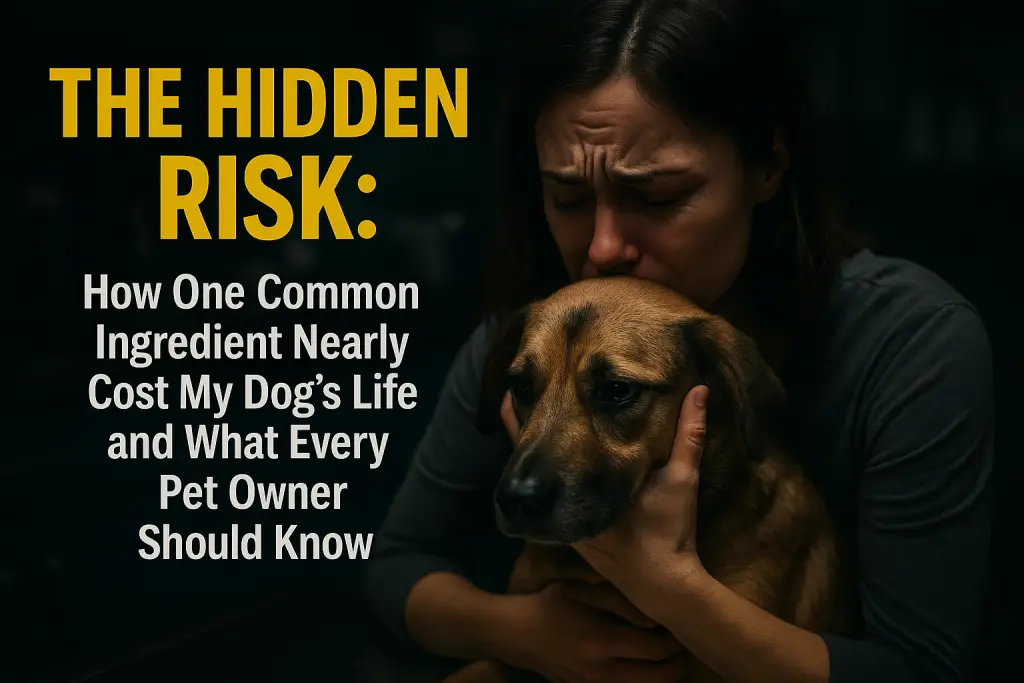
I never thought a routine day would turn into a nightmare. It started like any other: morning walk, breakfast for both of us, and then I settled in to work. A few hours later, I noticed something wasn’t right with Daisy—my little rescue beagle who means the world to me.
She looked uncomfortable. Restless. Her breathing was off. And then she started vomiting.
I rushed her to the vet, panicking. What could I have done wrong?
Turns out, the culprit was something I gave her almost every day—without thinking twice.
The Ingredient That Nearly Killed Her
Xylitol.
Ever heard of it? It’s a common sugar substitute found in:
- Sugar-free gum
- Peanut butter
- Baked goods
- Some toothpaste
- Even in chewable vitamins
I had been using a “healthy” peanut butter brand as a treat filler in Daisy’s Kong toy. It was sugar-free, all-natural, and had great reviews. But buried deep in the ingredient list? Xylitol.
What Xylitol Does to Dogs
Here’s the scary part: what’s safe for humans can be deadly for dogs. Xylitol triggers a rapid release of insulin in dogs, leading to:
- Dangerous drop in blood sugar (hypoglycemia)
- Vomiting, weakness, seizures
- Liver failure (sometimes within 24 hours)
- Death, if not treated immediately
And the worst part? It only takes a tiny amount.
How I Missed the Signs
I knew about chocolate. I even kept grapes far away. But Xylitol? I had no clue.
Here’s what I ignored until it was almost too late:
- Daisy licking her lips constantly
- Trembling a bit while walking
- Acting clingy, then suddenly lethargic
- A single episode of vomiting (which I brushed off)
If I hadn’t taken her in when I did, I might’ve lost her. That thought still breaks me.
Common Products That Contain Xylitol
Here’s a quick table of household items that might contain xylitol. Please check the labels before letting your dog near any of these:
| Product Category | Common Items That May Contain Xylitol |
|---|---|
| Food | Sugar-free gum, peanut butter, protein bars |
| Dental care | Toothpaste, mouthwash, dental floss picks |
| Health supplements | Chewable vitamins, sugar-free meds |
| Baked goods | Sugar-free cookies, muffins, cupcakes |
Even trace amounts can be risky.
What I Do Differently Now
After that terrifying day, I completely changed how I shop and feed Daisy. Here’s what I do now:
- I always check ingredient labels—even on pet treats.
- I stick with dog-safe peanut butter brands like “Teddie” or “MaraNatha.”
- I keep a list of toxic foods pinned to my fridge (you’d be shocked how many there are).
- I share my story, because too many dog lovers still don’t know about this.
Final Thoughts
I’m not writing this to scare you—but I am writing it so you don’t go through what I did. The guilt was overwhelming. Daisy was lucky. We were lucky.
Dogs trust us with everything. They don’t read labels. They can’t tell us what’s wrong until it’s really wrong.
So please, double-check that “healthy” snack or treat. It might seem small, but it could save your dog’s life.
